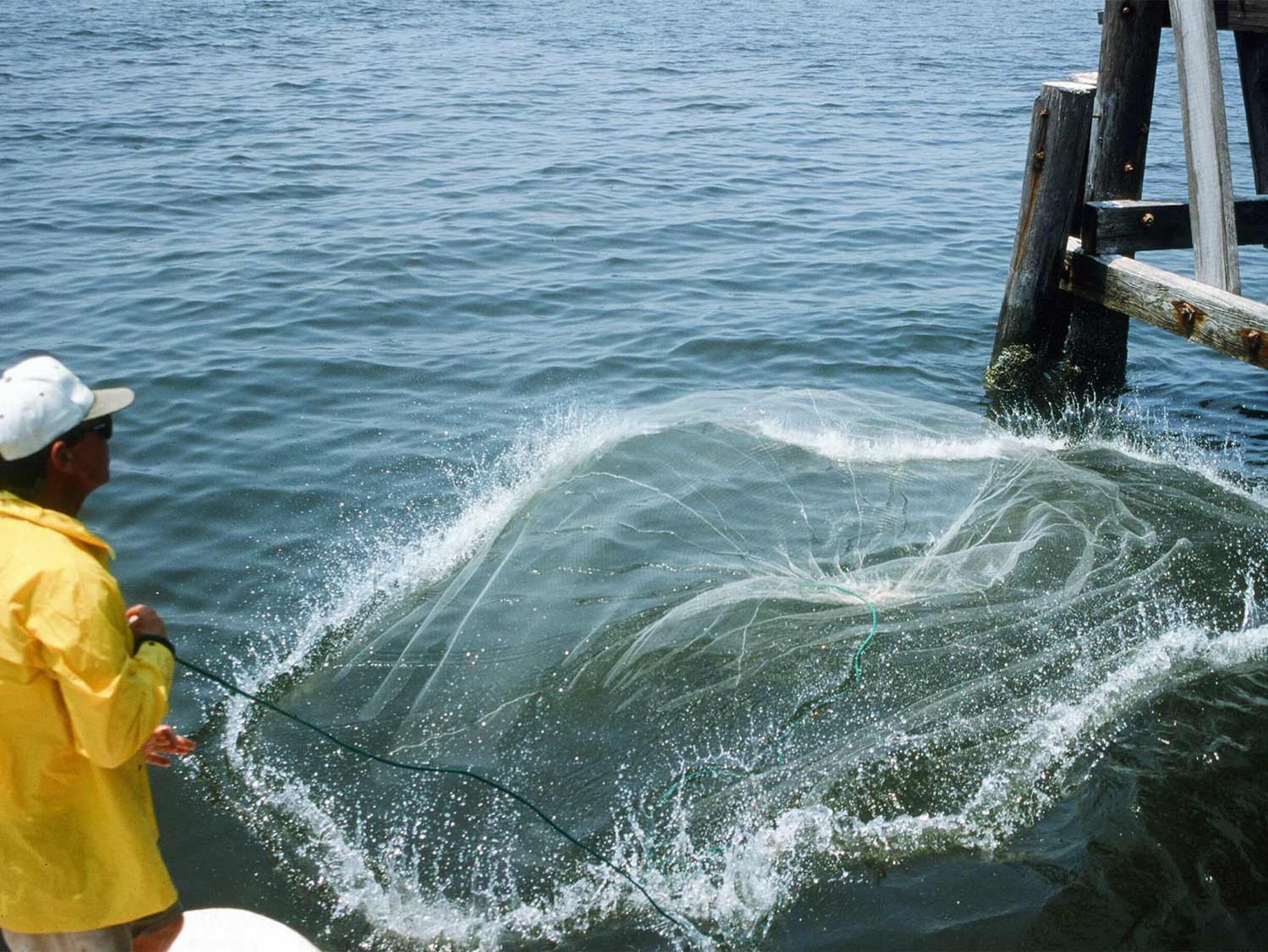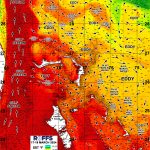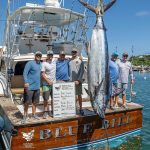Article Courtesy: fieldandstream.com | Originally Published: 1/2/20 | Click here for original article
The Ultimate Guide to Catching and Keeping Saltwater Live Bait
The top live baits for inshore and offshore fishing, and how to keep them healthy all day
Editor’s Note: Check all local regulations regarding the catching, keeping, and usage of live bait for fishing.
While some people shun the use of live bait for catching marine fish, most professional guides and veteran saltwater anglers know that it’s one of the best ways to put gamefish in the boat. Whether you fish inshore, offshore, or somewhere in between, here are a few top baits to tempt some of the marine world’s most popular species—along with ways to keep them lively for the most productive fishing.
1. Baitfish
Marine baitfish are available in huge numbers to saltwater anglers and they will catch a multitude of gamefish species. You can find them in canals, inshore creeks, bays, sounds, rivers, jetty areas, inlets, and along beaches—and even far offshore over reefs, wrecks, and oil rigs. Here are the most popular.
For many Atlantic and Gulf Coast anglers, large live menhaden (also referred to as bunker or pogies) are premier baits for tarpon, king mackerel, cobia, striped bass, bluefish, and more. This is largely due to their abundance during the warmer fishing seasons. Gamefish are conditioned to feeding on them as they migrate along the coasts. Inshore species such as redfish, seatrout, and flounder also gorge on smaller menhaden.
Cast-netting menhaden is the best way to catch enough for a day of fishing. Inshore anglers will find smaller baits in the backs of canals, tidal creeks, and small rivers. Offshore menhaden schools will dimple the surface as the sun rises, normally within a couple miles of shore. They look like dark balls in clear water, and they can be found under diving pelicans.
Similar to menhaden, cast-netting is the quickest way to produce the most mullet baits as well. Targeting them is especially popular during the massive mullet run along the south Atlantic Coast. From September through November, mullet of all sizes push out of coastal rivers and bays and migrate south near beaches and the Intracoastal Waterway by the millions. During this time, they become an abundant, free-to-catch bait for cast-net anglers.
Ballyhoo, Herring, Pilchards, Sardines, Pinfish, and Other Baitfish
Many marine baitfish species can be attracted with ground fish, cat food, and meal concoctions, and then cast-netted. This can be highly productive for gathering herring, pilchards, shad, sardines, and pinfish. Other baitfish species, such as ballyhoo—a popular live bait in South Florida for sailfish, dolphin, and other pelagic species—also lend themselves to cast-netting this way.
If cast-netting isn’t an option, several anglers working together with hook and line can catch good numbers of baitfish in a short time. Most baits (including cigar minnows, hardtails or scad, pinfish, small blue runners, and others) are readily caught using sabiki rigs—a tandem series of small hooks dressed with colorful strips of iridescent material.
Multiple hooks baited with shrimp, fitted to a leader, and taken deep with a simple lead weight also work well for catching baitfish when jigged over reefs, wrecks, and around oil-and-gas rig structures. Use boat sonar to help pinpoint deep bait pods, and make sure to use stout tackle to avoid getting them taken by predator fish.
Umbrella-style lift nets are also productive, especially off docks and bridges at night, where lights can be used to attract baitfish.
Baitfish traps are easy to use, and are very effective at collecting some small baitfish, including pinfish, killifish, and mud or bull minnows. Mud minnows are especially hardy, and are excellent baits for a variety of species. Small commercially-made, wire-mesh traps are available, and crabs, oysters, muscles, cat food, fish meal, and bread are all great for attracting baitfish into these traps. Place them in tidal creeks and saltwater run-outs.
How to Keep Baitfish Alive
Well-aerated baitwells are necessary in order to keep the aforementioned baitfish lively. Mullet and pinfish are the hardiest, with menhaden, sardines, and ballyhoo being less so. The primary requirement is to keep a tank rolling with clean, oxygenated saltwater pumped in from outside the baitwell system. The most popular systems have large overflow valves to flush out “used” water in tanks as new water is pumped in. It’s also important not to overload the tanks.
This constant exchange of new water from outside the tank is most important when water temperatures soar during the summer. For this reason, insulated bait tanks are favored by many anglers. Veteran captains often have several bait wells on their boats as backups should one tank and aeration system fail.
Live shrimp are available in huge numbers throughout virtually all coastal regions, both inshore and offshore, and because of that, they are a very effective and popular bait. Inshore, they are used for just about everything including snook, trout, stripers, tarpon, redfish, flounder and more.
Shrimp of all varieties can be caught in a number of ways. In confined regions such as passes, creek mouths, and canals, mesh dip nets are effective. Cast-netting shrimp works as well, and it is the most common way to get a lot of live bait in a hurry. Nighttime is the best time to use a cast net. Target and bait shallow areas with fish meal or pellets, then periodically net over the sunken bait.
Catching bait shrimp during daylight hours is also common, but it’s generally more productive in deeper water—10 to 20 feet—near channels and drop-offs. Sonar is useful to pinpoint shrimp bait pods, which hug tight to bottom areas and look like ridges of grass. Specialized heavy cast nets work better in deep water.
In large estuaries and rivers, shallow-water daylight shrimping can be effective. You can spot Shrimp “popping” on the surface and then cast-net for them. The best places to check are the junctions of tidal creeks during hard falling tides.
Catching crabs from shorelines, piers, and causeways by soaking a chicken neck or wing tied to a stout cord is an easy, cheap, and effective way to get a few for bait use. When a crab grabs the chicken, slowly lift it to the surface and net it. Specialized tight-mesh crab nets are sold in coastal areas for this purpose.
Shallow-water crabbers often hang several baited lines from a long mainline stretched between posts. After several rigs are deployed, they tend to them periodically by wading along the mainline.
Commercial heavy-wire lift traps for blue crabs also are popular. Anglers bait traps with fish scraps and lower them to the bottom in deeper water. When line tension is released from the trap, it opens, making the bait available to nearby crabs. When hauled back up, the sides close from the top, catching the crustaceans inside.
Larger commercial-type crab traps, measuring several feet square, are available in coastal regions as well. Traps with tightly woven mesh are best for catching bait as they prevent small crabs from escaping. Bait traps with chicken necks, fish scraps, beef liver, or shrimp heads, and place them near structure or suspend from floats almost anywhere. A dozen or more bait-size crabs can be collected per trap, and the trap need not be tended daily for it to work. Large traps like these will keep crabs lively for several days so long as there is adequate bait inside for them to eat. Otherwise, they will cannibalize each other.
How to Keep Blue Crabs Alive
Keeping blue crabs alive is relatively easy. They survive well in aerated bait tanks and in small minnow-style buckets placed overboard while fishing.
For overnight storage, stow crabs in a cooler with a damp towel or rag tossed over them and a bag of sealed ice or ice packs placed to the side. Keep the cooler ajar for air circulation, and maintain the temperature between 40 to 50 degrees. If outside, stow the cooler in the shade with no water inside.
Fiddler crabs are a superb bait for redfish, permit, black drum, sheepshead, pompano, tautog, and more. Small fiddler crabs can be seen by the hundreds during warm weather at low tides as they scurry around on exposed mudflats along the South Atlantic Coast inshore areas. They dig small but very defined holes in the mud and sand.
Don’t waste time trying to run them down. Instead, get a quart-sized bucket, dig a hole in a likely mud or sandbank, and bury the bucket so that the top is flush with the soil surface. Bait the bucket with fish viscera, tails, or squid, and wait 15 to 30 minutes. Crabs will be drawn to the bait and go into the bucket.
Fiddler crabs don’t need a lot of care and can be kept lively for a month or more. They stow nicely in a standard plastic live bait bucket for use on the water. A chunk of saltwater-dampened cardboard or newspaper in the bucket is enough to keep them happy through a day of fishing.
At home, a plastic storage container can hold dozens of fiddlers. Again, saltwater-dampened cardboard and newspaper in the container give them a place to hide and stay healthy for weeks. If you have a lot of crabs, a child’s plastic swimming pool works nicely as a container. Keep crabs in a cool, dry place out of the sun.
Mole crabs (sand crabs or sand fleas) are superb small coastal and beach baits. In warm weather, most beach areas along the Atlantic and Pacific coasts of the U.S. have good populations of sand fleas. They’re typically found along beaches with more wave action. Mole crabs are not difficult to catch and locate, but it takes a bit of a trained eye and some effort to gather them from the surf.
Look for water ripples or dimples in the sand as a wave recedes from the beach, back into the ocean. The dimples are from abundant colonies of crabs just under the surface. To catch them by hand, push your fingers deep into the moist sand around the dimples, then lift quickly and deposit the wet sand and crabs onto the beach. Use a leaf rake, shovel, or specialized sand flea rake to sift through the wet sand and collect them.
Stow sand fleas in a covered bait bucket or similar container with moist sand. Don’t cover them with water, and make sure the container is not sealed, so that the crabs can breathe. Store in a cool, dry place in moist sand out of the sun. Mole crabs will stay lively for up to a week.
One of the best marine baits for a host of species is the eel. Eels are go-to baits for stripers, but also extremely effective for many other species, including cobia, tarpon, various bottom fish, amberjack, and even billfish.
They inhabit tidal rivers and bays and can be readily caught by anglers using special eel pots or mesh traps baited with fish guts, squid, and crushed crabs. Eel traps are also available and have specialized funnels that allow eels to swim in easily without escaping. Eels also can be caught on hook and line, but traps are the way to go. Several traps can be set in water 4 to 10 feet deep, and checked over the course of a few days to capture enough eels for fishing.
Eels are simple to keep alive while fishing and keep well in a small bucket with seaweed. Use a wet towel and ice packs to make them go somewhat dormant so they can be put on hooks. A live eel that’s not “iced” is almost impossible to handle for hooking.
For long periods of time, eels can be kept in the traps they were caught in. Just sink the traps in brackish or tidal river water with enough food inside for them to eat. In some states eels are trapped commercially for sale, so check local regulations before catching your own for fishing use.













